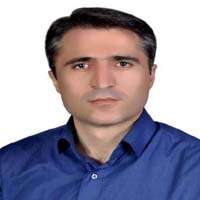Application of GIS and AHP in Determination of the Groundwater Susceptible Areas in the Mehran Plain, Ilam Province
Author(s):
Article Type:
Research/Original Article (دارای رتبه معتبر)
Abstract:
Introduction
The drinking water of about 50% of the world's population is supplied by groundwater whereas it includes only 4% of water of the Earth. (Taheri Tizro, 1384:3). Iran with an average annual rainfall of 250 mm is one of the arid countries in the world (Masodyan & Kavyani, 1386:82). Determination of new groundwater potential and its management in arid and semi-arid regions is a temporal solution to encounter water crisis. Indeed, it includes the identification of the potential areas for water abstraction according to the aquifer capacities.
Methodology
In order to explore groundwater potential in Mehran Plain, several data including climatic data, regional stations, geological, vegetation map and topographic maps, and satellite images of the area were prepared. Using the RS and GIS technologies, several layers were developed and combined to obtain the final zoning map. The main factors that were used to prepare the layers included lithology, climate (precipitation and temperature), hydrology (drainage density and distance from the drainage), vegetation, topography (elevation and slope of the land), faults (fault density and distance from fault), geological maps, topographic maps, and precipitation data which were processed in the Geographic Information System (GIS) to provide a groundwater potential map. The weight of the different layers was assigned from 1 to 9 based on the judgment and field survey. The priority of each layer was rated based on their potential for groundwater using the Analytic Hierarchy Process (AHP). Using the fuzzy approach, the layers were transferred to Idrisi Software and standardized. In order to perform groundwater potential zoning in Mehran Plain, standardized and weighted maps were combined using AHP-OWA and AHP-WLC methods to produce its final groundwater potential zoning maps.
Results and Discussion
Weighing the parameters was carried out by a paired comparison method and the weights were calculated based on an analytic hierarchy process. The amount of calculated weights of lithology and distance from fault parameters were respectively 0.31 and 0.02. Next, the fuzzy maps were produced and were overlaid. The final map of the groundwater potential for the study area was prepared using AHP-OWA, AHP-WLC overlaying methods. In these methods, the weight of each layer was determined based on its importance in the groundwater potential and a map was produced which showed the groundwater potential in different parts. It showed five zones with very low, low, medium, high, and very high potential zones. The zoning map was verified using data of wells location and their catchment area.
Conclusion
The effective parameters which cause potential for groundwater are varied in literature, but in most studies, hydrological, geological, climatic, and topographic parameters have been employed. In this research, the effective parameters on the potential of groundwater resources included lithology, climate (precipitation and temperature), hydrology (drainage density and distance from the drainage), vegetation, topography (elevation and slope of the land), fault layer (fault density and distance from fault). The final map of groundwater potential in the study area was prepared using AHP-OWA, AHP-WLC methods. Five zones with various groundwater potential included very low, low, medium, high and very high. The areas with high groundwater potential are in accordance with the alluvial deposits and the zones bearing low groundwater potential are matched with the clayey and marly sediments and with relatively high slope. The verification of the final zoning map showed that the employed methods had a high efficiency in groundwater potential determination. The results of this research can be used in the management of groundwater and prevention of over abstraction of groundwater resources, especially in Mehran Plain bearing low groundwater potential.Keywords:
Language:
Persian
Published:
Hydrogeomorphology, Volume:4 Issue: 16, 2018
Pages:
1 to 22
https://magiran.com/p1920776
دانلود و مطالعه متن این مقاله با یکی از روشهای زیر امکان پذیر است:
اشتراک شخصی
با عضویت و پرداخت آنلاین حق اشتراک یکساله به مبلغ 1,390,000ريال میتوانید 70 عنوان مطلب دانلود کنید!
اشتراک سازمانی
به کتابخانه دانشگاه یا محل کار خود پیشنهاد کنید تا اشتراک سازمانی این پایگاه را برای دسترسی نامحدود همه کاربران به متن مطالب تهیه نمایند!
توجه!
- حق عضویت دریافتی صرف حمایت از نشریات عضو و نگهداری، تکمیل و توسعه مگیران میشود.
- پرداخت حق اشتراک و دانلود مقالات اجازه بازنشر آن در سایر رسانههای چاپی و دیجیتال را به کاربر نمیدهد.
In order to view content subscription is required
Personal subscription
Subscribe magiran.com for 70 € euros via PayPal and download 70 articles during a year.
Organization subscription
Please contact us to subscribe your university or library for unlimited access!




